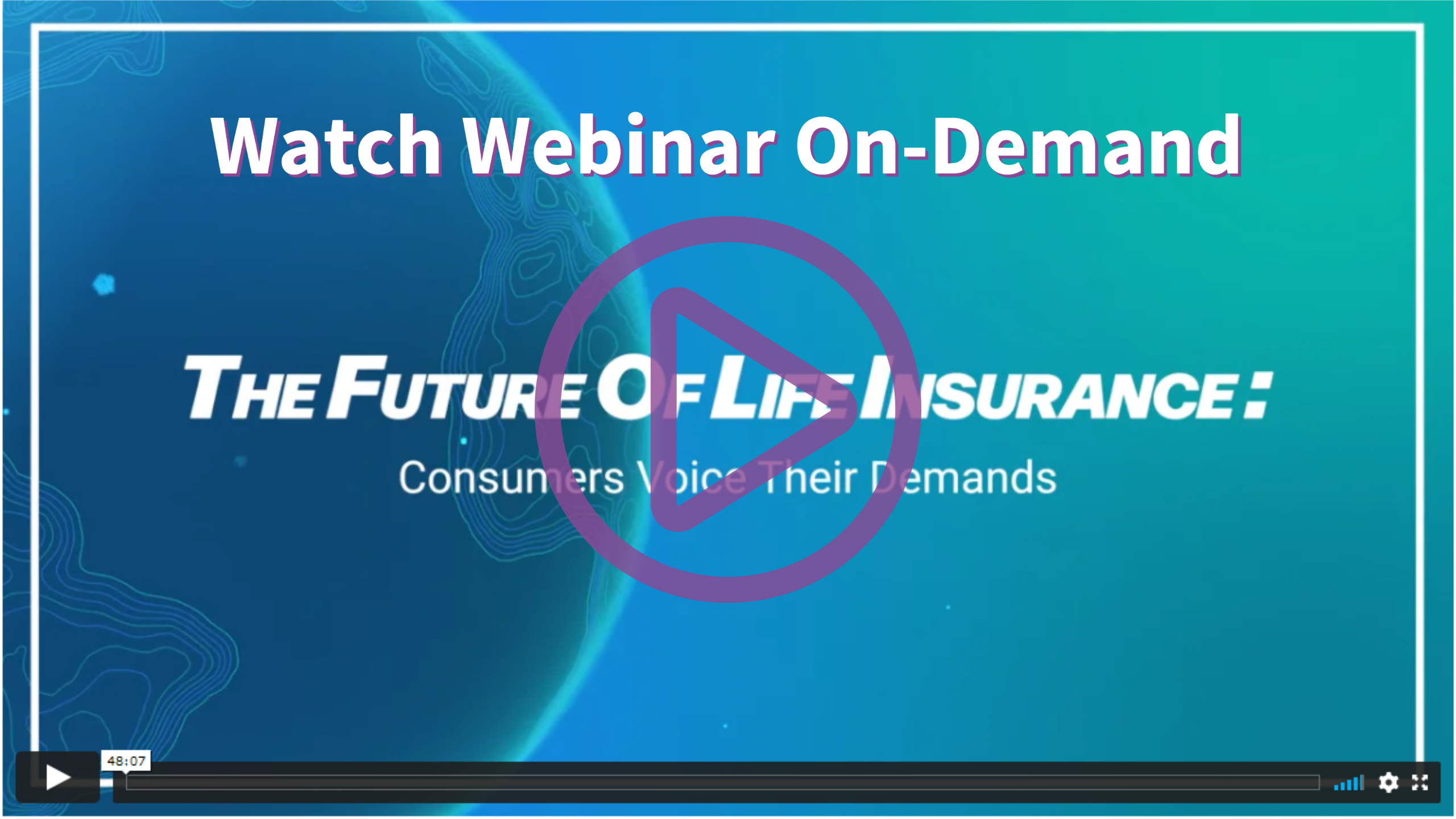Life insurance has traditionally been a transaction-focused industry: customer buys policy, customer pays bill, insurer pays claim. But like many other industries that have already experienced profound transformation, life insurance companies are rocketing toward a technology-driven future that is centered around the customer.
Customer centricity is a bit of a buzz word these days. What does it really mean to be a customer-centric life insurer? At the 2020 ITC Global Conference, my EIS colleague Joel Yarde, Daniel Deno, director at PwC Advisory, and I had the honor of presenting a breakout session, entitled “The Future of Life Insurance: Consumers Voice their Demands,” on the future of the customer experience in life insurance.
We took a deep look at some of the types of engagements insurers will need to deliver in the near future in order to retain their existing policyholders and make life insurance accessible for the vast number of people who have none or too little.
During the session, we highlighted three strategies life insurers need to lean into in order to differentiate their business for a new generation of customers. These include:
- Hyper-personalization
- Connecting ancillary services for a more complete customer experience
- Bundling all types of coverage under a single policy
I encourage you to watch the full presentation, which you can find below, but here’s a summary of the takeaways.
Hyper-personalization for a better insurance experience
We’ve all experienced how tech-driven companies personalize customer experiences for us in our day-to-day lives. Take Netflix, for example. Your Netflix home screen doesn’t look like mine. I know this because Netflix doesn’t have just one product. They have hundreds of millions of products: one for each member.
“Each experience is personalized across many dimensions: the suggested videos and their ranking, the way videos are organized into rows and pages, and even the artwork displayed,” according to Netflix.
To reimagine life insurance, carriers need to adopt this “hundreds-of-millions-of-products” mindset. No two customers are exactly alike, so how can insurers deliver the exact right experience at the exact right time for the exact right person?
Although this seems daunting, let’s not overcomplicate the conversation. An insurer’s ability to personalize customer engagement is all about one thing: data. In five-to-10 years, when we look back at which life insurers have experienced the largest revenue growth, the frontrunners will be those who were able to harness data in ways that are meaningful to customers.
Can you recognize quickly when a policyholder has a new addition to the family? Can you identify when a policyholder makes a purchase, like a new home or automobile, which may indicate a lifestyle change or a significant increase in income? Will you be able to reward policyholders for healthy habits (fitness, sleep, diet, etc.)? Can you use the knowledge gained from genetic tests to provide the most appropriate coverage?
These are just some of the types of data-driven experiences that will define life insurance in the future. And, as Dan and Joel explain in this snippet from our presentation, they’re experiences that can differentiate life insurers in a market that’s otherwise highly commoditized.
Reimagining insurance with connected data and services
For more than a century and a half, the life insurance industry has depended on predicting mortality and using actuarial ratios to determine financial risk. In the future, life insurers will see their relationship with customers through a broader lens — one that aims to lengthen lives and strengthen financial wellbeing.
As I discussed in the presentation, transitioning from the “one-and-done” sale to a more interactive, always-on relationship that’s focused on providing continuous value and service to customers will create differentiation and expanded revenue opportunities. Customers are increasingly willing to share their data, so long as carriers return value to them in exchange, and insurers are taking notice.
According to “The 2020 Insurer Industry Compass,” a research paper created by Insurtech Insights in partnership with EIS, 66% of life insurance companies are already partnering with non-insurers to create additional value.
For example, take Vitality Group, a company that develops a behavioral health and wellness platform. They kicked off the ITC Global Conference, and it was exciting to hear how they are partnering with life insurance companies to inspire healthier behaviors in members. Policyholders that participate in the program can reduce life insurance costs while carriers lower claims and reduce lapses in coverage. Similar opportunities exist for life insurers to play a role in their customers’ financial health, as well.
These types of connected experiences require a highly-networked ecosystem of data sources and partners. We’re no longer merely talking about being able to collect and analyze internal data you’ve collected on customers. It’s about reaching out to partners and insurtechs and tapping into their data, services, and applications to provide a comprehensive health, wealth, and wellness program. This ecosystem mentality is enabled by APIs and cloud-native SaaS solutions, which Dan and Joel discuss in the snippet below.
Bundling for holistic insurance coverage
According to our survey with Insurtech Insights, more than 30% of consumers say the ability to bundle multiple products and services into a single purchase is one of the most important factors when purchasing insurance.
I’m personally taking a bundled approach with three automobiles, a boat, and my home under a single policy. This not only gives me the advantage of a single point of contact for that carrier but a significant discount, as well. Plus, my provider gets a “stickier” customer who is far less likely to leave.
Win the race to reimagine life insurance. Start now.
Although bundling products has become commonplace in the property and casualty industry, it has yet to take hold in life insurance. Life insurance is a very different type of risk that traditionally has required a very different set of core systems to manage it.
Most long-standing, incumbent insurers have separate life insurance systems that were built with now-obsolete programming languages. Even those who have modernized within the last decade will face challenges because their systems were built on closed, proprietary architectures (what we refer to as “modern legacy”).
In either case, data is siloed and unable to be effectively merged with other line-of-business customer records — thus preventing the coordinated “single-policy-for-all-coverages” model that may become the Holy Grail for carriers of the future. The need is clear for a line-of-business-agnostic platform that eliminates data silos and enables carriers to establish a true 360-degree customer record.
Although the life insurance industry has been slower to digitize its customer engagements than other segments, make no mistake: the transformation has already begun. If your business is prioritizing new ways to engage with life insurance customers, we’re eager to hear your ideas and demonstrate how we can help. Contact us today to start the conversation!






